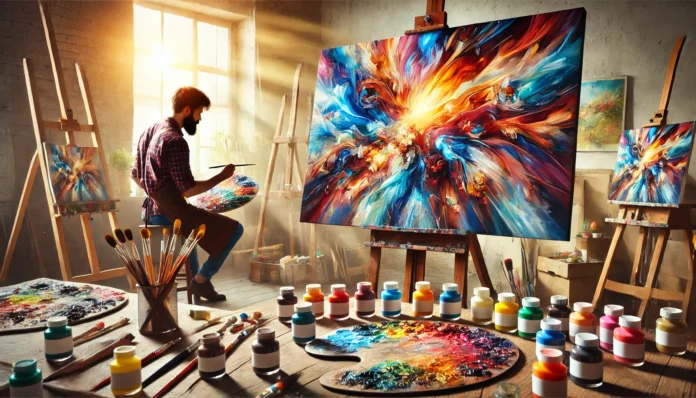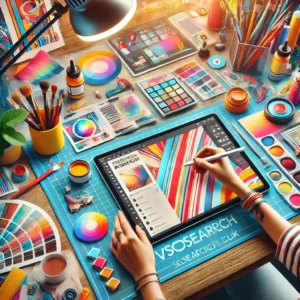Introduction
The blues color that resembles calmness, serenity, and depth has been inspiring people for several thousand years. In the realm of aesthetics, the term “Aesthetic:Htpyduyk9iy= Blue means a type of sensibility associated with the colour blue and its ability to signify something. This article provides an insight into the sociopolitical aspects of this particular mode of beauty and examines cultural representations of it and its relevance to art and to the individual and society.
Aesthetic:Htpyduyk9iy= Blu in Art of Today
In contemporary art, Aesthetic:Htpyduyk9iy= Blue is now an aesthetic movement. Blue color is also emphasized with the help of which artists highlight different aspects of this hue. In their work some artists use blue as a symbol of serenity and meditation, while for others may use blue as symbolism of the mysterious or the sad.
Blue in Fashion and Design
Beyond the realm of art, Aesthetic:VEHINd = Blue has also profoundly influenced what is termed fashion and design. Blue is a quite universal and is used in different styles starting with classics up to modern ones. It is related to style and class, and can give a product an air of immortality.
The Implications of Aesthetic:Htpyduyk9iy= Blue
The Aesthetic:Htpyduyk9iy=Blue movement also suggest important formation for creativity, individualism and unique individual artefact. Through learning about this color, we are better able to understand our feelings, ideas, and live’s events. Additionally, the Aesthetic:Btues9liyhyduky= The blue movement can make us appreciate the quirkiness of life in the world we live in..
Key Takeaways
- Blue represents calmness and stability in design and art.
- The color influences trends in fashion and architecture today.
- Its historical and cultural significance continues to shape its use.
What Does Aesthetic Mean to Art and Design
Aesthetic means the understanding and appreciation of beauty in art and design or a set of such principles. It determines how people capture and respond towards factors with visual impressions.
In art aesthetics may enable feelings, thoughts and emotions to be created. Color, a shape, and a texture are employed by artists to set the required mood. Colors such as the color blue has hidden meanings like meaning calm or sadness making an impact on the viewer.
In design, aesthetics focus on functionality and form. Good design attracts attention and provides a pleasant experience. It requires a balance between appearance and usability.
Key Elements of Aesthetic in Art and Design
- Color: This means that when assigning colors it is possible to provoke different emotions or set up the right atmosphere.
- Shape: Taking control of the flow of the viewer’s gaze and achieving an overall homogeneity is enabled through the use of shapes.
- Texture: Striping makes a piece more exciting and brings more create depth to it.
People who are into arts and designing in the usual case take time to study aesthetical weirdness.
By understanding what pleases the eye, they can create more impactful pieces. This knowledge helps in crafting environments that resonate with viewers while meeting practical needs.
Why Aesthetic Matters
- Emotional Impact: Aesthetics can make art more relatable.
- Engagement: A visually pleasing design draws in the audience.
- Cultural Reflection: Aesthetic choices can reflect cultural values and trends.
The essence of aesthetic deeply influences how art and design are created and appreciated.
Historical Perspectives on Blue in Aesthetics
Blue has held significant meaning across various cultures and historical contexts. Its presence in art reflects broader social, spiritual, and cultural themes.
Cultural Significance of Blue
It is important to note that blue has met with admiration by many cultures across the world down the ages. Most often it means harmony and stability in the the country. For instance, in Ancient Egypt, power color blue because it symbolized the sky and the Nile. They made a use of blue pigments as a symbol of heavens in ornaments and arts.
In the Middle Ages, blue became associated with the Virgin Mary, symbolizing purity and grace. This made blue very important in Christian art. In many Asian cultures, blue represents immortality and is used in religious practices.
The importance of blue can also be seen in flags. Many nations use blue to symbolize freedom, loyalty, and stability.
Historical Use in Art
Artists have used blue as far back as the early ages in the creation of most artwork. Artists of ancient epoch painted with blue hues traced from minerals including the lapis lazuli. They crushed this rich blue stone and used it in paintings, making it rare and relatively expensive.
During the Renaissance, blue gained popularity in paintings. Artists like Raphael and Michelangelo featured blue in their works. They often used it to highlight important figures or themes.
In addition, due to the advent of synthetic blue pigments in the century, blue color was more popular. Erasmus indeed once referred to this colour, and blue continued to play a critical role in modern art with its champions such as Yves Klein.
FAQs
What does Aesthetic:Htpyduyk9iy= Blue mean?
Aesthetic:Their meanings Htpyduyk9iy = Blue is an aesthetic movement, which has the color blue and the kind of power it carries.
What does blue symbolize, or why is it currently used as a symbol of tranquility and serenity?
Research has indicated that the hue can actually induce relaxation to the human nervous system.
How is Aesthetic:Htpyduyk9iy= Can blue be used in contemporary art?
Artists will opt to use blue as the main hue of their artwork and taking a deeper look at all the shades of blue.
What are the implications of Aesthetic:TheMnodhqwkh¼Kdvhzrun= Blue for personal identity?
The Aesthetic:Htpyduyk9iy= Blue is movement can make people feel more about the beauty and mysterious of the world and the self and more understand about own feeling, thinking and experience.
Conclusion
The Aesthetic:Htpyduyk9iy= Blue movement is a detailed and diverse look at the essence of the color blue and its effect on our world and ourselves. When this meaningful understanding is gained along with the historical, art and other related aspects of this aesthetic one would be in a position to respect more and value the influence and impact of colour in formulating ones perceptions about the environment we are in.
























+ There are no comments
Add yours